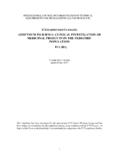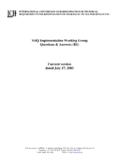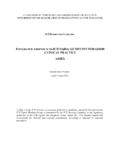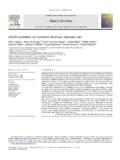Transcription of GUIDELINE FOR GOOD CLINICAL PRACTICE
1 INTERNATIONAL CONFERENCE ON HARMONISATION OF TECHNICAL REQUIREMENTS FOR REGISTRATION OF PHARMACEUTICALS FOR HUMAN USE ICH HARMONISED TRIPARTITE GUIDELINE STABILITY TESTING OF NEW DRUG SUBSTANCES AND PRODUCTS Q1A(R2) Current Step 4 version dated 6 February 2003 This GUIDELINE has been developed by the appropriate ICH Expert Working Group and has been subject to consultation by the regulatory parties, in accordance with the ICH Process. At Step 4 of the Process the final draft is recommended for adoption to the regulatory bodies of the European Union, Japan and USA. Q1A(R2) Document History First Codification History Date New Codification November 2005 Q1 Approval by the Steering Committee under Step 2 and release for public consultation.
2 16 September 1992 Q1 Q1A Approval by the Steering Committee under Step 4 and recommendation for adoption to the three ICH regulatory bodies. Q1 was renamed Q1A. 27 October 1993 Q1A Q1A(R) Approval by the Steering Committee of the first revision under Step 2 and release for public consultation. 7 October 1999 Q1A(R1) Q1A(R) Approval by the Steering Committee of the first revision under Step 4 and recommendation for adoption to the three ICH regulatory bodies. 8 November 2000 Q1A(R1) Current Step 4 version Q1A(R2) Approval by the Steering Committee of the second revision directly under Step 4 without further public consultation, to include consequences of the adoption of Q1F (Stability Data Package for Registration Applications in Climatic Zones III and IV), and recommendation for adoption to the three ICH regulatory bodies.
3 6 February 2003 Q1A(R2) COVER NOTE FOR REVISION OF Q1A(R) STABILITY TESTING OF NEW DRUG SUBSTANCES AND PRODUCTS The purpose of this note is to outline the changes made in Q1A(R) that result from adoption of ICH Q1F Stability Data Package for Registration Applications in Climatic Zones III and IV . These changes are: 1. The intermediate storage condition has been changed from 30 C 2 C/60% RH 5% RH to 30 C 2 C/65% RH 5% RH in the following sections: Drug Substance - Storage Conditions - General Case Drug Product - Storage Conditions - General Case Drug products packaged in semi-permeable containers 3 Glossary - Intermediate testing 2.
4 30 C 2 C/65% RH 5% RH can be a suitable alternative long-term storage condition to 25 C 2 C/60% RH 5% in the following sections: Drug Substance - Storage Conditions - General Case Drug Product - Storage Conditions - General Case 3. 30 C 2 C/35% RH 5% RH has been added as a suitable alternative long-term storage condition to 25 C 2 C/40% RH 5% and the corresponding example for the ratio of water-loss rates has been included in the following section: Drug products packaged in semi-permeable containers Mid-stream switch of the intermediate storage condition from 30 C 2 C/60% RH 5% RH to 30 C 2 C/65% RH 5% RH can be appropriate provided that the respective storage conditions and the date of the switch are clearly documented and stated in the registration application.
5 It is recommended that registration applications contain data from complete studies at the intermediate storage condition 30 C 2 C/65% RH 5% RH, if applicable, by three years after the date of publication of this revised GUIDELINE in the respective ICH tripartite region. i STABILITY TESTING OF NEW DRUG SUBSTANCES AND PRODUCTS ICH Harmonised Tripartite GUIDELINE First Recommended for Adoption at Step 4 of the ICH Process on 27 October 1993. Revised under Step 2 of the ICH Process on 7 October 1999 and Recommended for Adoption at Step 4 of the ICH Process on 8 November 2000. This GUIDELINE has been Revised a second time and has reached Step 4 of the ICH Process at the ICH Steering Committee meeting on 6 February 2003.
6 It is recommended for adoption to the three regulatory parties to ICH TABLE OF CONTENTS 1. 1 Objectives of the GUIDELINE .. 1 Scope of the 1 General 2. GUIDELINES .. 1 Drug Substance .. 1 General .. 1 Stress 1 Selection of Batches .. 2 Container Closure 2 2 Testing 3 Storage 3 Stability 5 Evaluation .. 5 Statements/Labeling .. 6 Stability Testing of New Drug Substances and Products T Drug Product .. 6 General .. 6 Photostability 6 Selection of Batches .. 6 Container Closure 7 7 Testing 7 Storage 8 Stability 12 Evaluation .. 12 Statements/Labeling.
7 13 3. GLOSSARY ..13 4. REFERENCES ..17 ii 1 STABILITY TESTING OF NEW DRUG SUBSTANCES AND PRODUCTS 1. INTRODUCTION Objectives of the GUIDELINE The following GUIDELINE is a revised version of the ICH Q1A GUIDELINE and defines the stability data package for a new drug substance or drug product that is sufficient for a registration application within the three regions of the EC, Japan, and the United States. It does not seek necessarily to cover the testing for registration in or export to other areas of the world. The GUIDELINE seeks to exemplify the core stability data package for new drug substances and products, but leaves sufficient flexibility to encompass the variety of different practical situations that may be encountered due to specific scientific considerations and characteristics of the materials being evaluated.
8 Alternative approaches can be used when there are scientifically justifiable reasons. Scope of the GUIDELINE The GUIDELINE addresses the information to be submitted in registration applications for new molecular entities and associated drug products. This GUIDELINE does not currently seek to cover the information to be submitted for abbreviated or abridged applications, variations, CLINICAL trial applications, etc. Specific details of the sampling and testing for particular dosage forms in their proposed container closures are not covered in this GUIDELINE . Further guidance on new dosage forms and on biotechnological/biological products can be found in ICH guidelines Q1C and Q5C, respectively.
9 General Principles The purpose of stability testing is to provide evidence on how the quality of a drug substance or drug product varies with time under the influence of a variety of environmental factors such as temperature, humidity, and light, and to establish a re-test period for the drug substance or a shelf life for the drug product and recommended storage conditions. The choice of test conditions defined in this GUIDELINE is based on an analysis of the effects of climatic conditions in the three regions of the EC, Japan and the United States. The mean kinetic temperature in any part of the world can be derived from climatic data, and the world can be divided into four climatic zones, I-IV.
10 This GUIDELINE addresses climatic zones I and II. The principle has been established that stability information generated in any one of the three regions of the EC, Japan and the United States would be mutually acceptable to the other two regions, provided the information is consistent with this GUIDELINE and the labeling is in accord with national/regional requirements. 2. GUIDELINES Drug Substance General Information on the stability of the drug substance is an integral part of the systematic approach to stability evaluation. Stress Testing Stability Testing of New Drug Substances and Products 2 Stress testing of the drug substance can help identify the likely degradation products, which can in turn help establish the degradation pathways and the intrinsic stability of the molecule and validate the stability indicating power of the analytical procedures used.
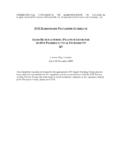
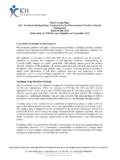
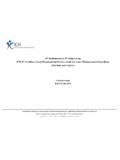
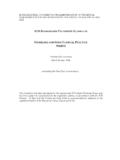
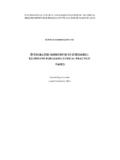
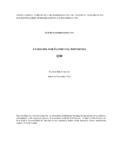
![[ICH E2F] [EXAMPLE DSUR – PHASE III …](/cache/preview/1/3/5/f/e/1/c/f/thumb-135fe1cf2cdb82799c462ad0ea089c48.jpg)
